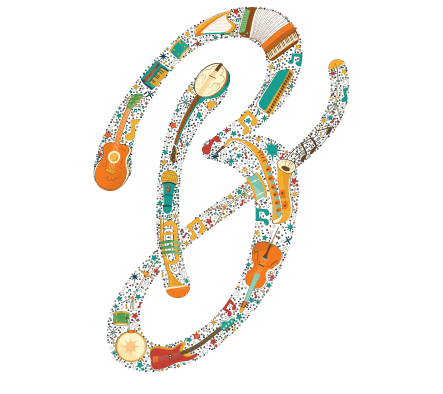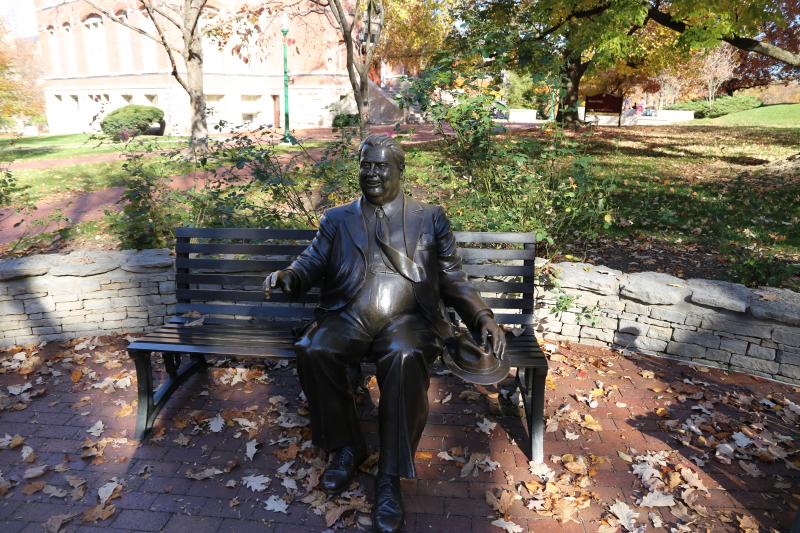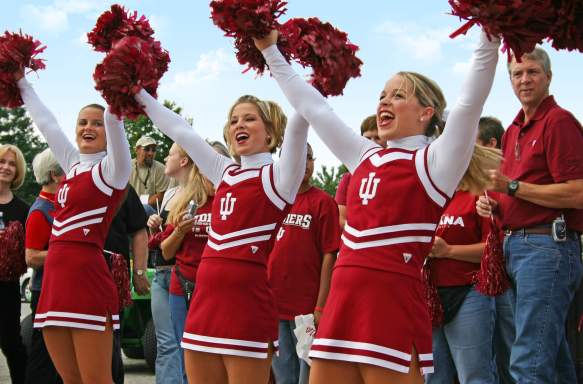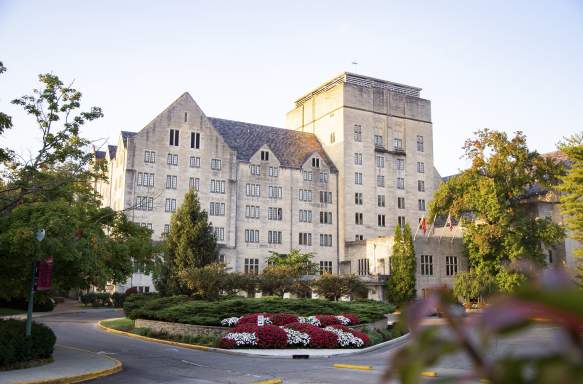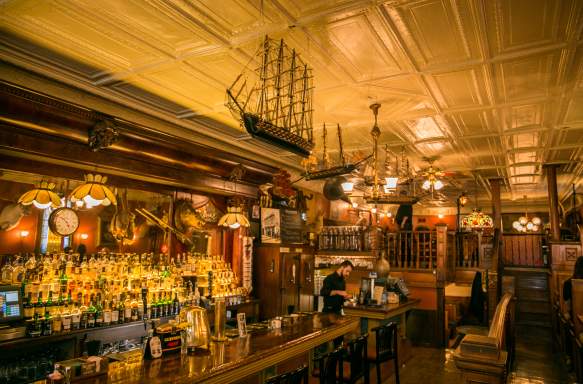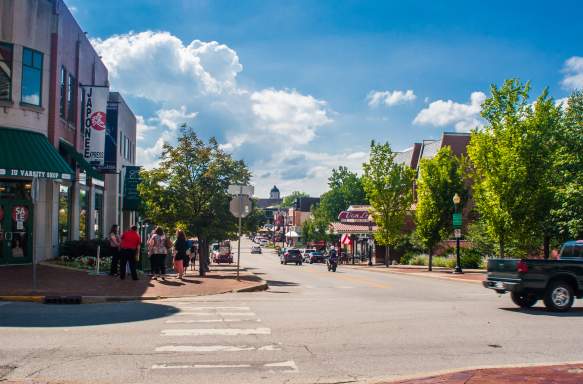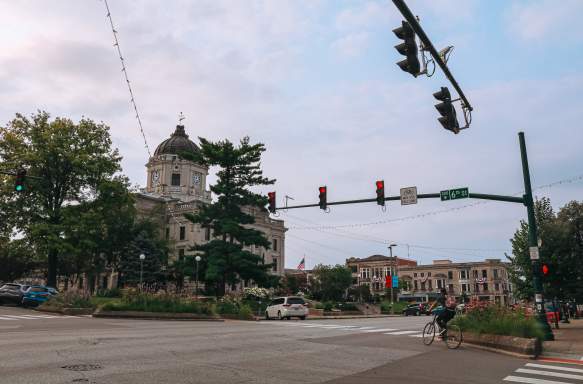The Indiana University campus has a collection of bronze sculptures representing pioneering Indiana University faculty members and students. Explore our beautiful campus and learn about the history behind the people - and maybe even partake in the traditions too.
Herman B Wells
Inside Sample Gates, Old Crescent area near the Rose Well House (2000)
Herman B Wells served as Indiana University's president from 1937 to 1962. Indiana-born and an IU graduate himself, Wells was also the second-longest running president in university history. Through his leadership, IU transformed into a "cosmopolitan center" for international learning (Capshew). While he had a surplus of accomplishments, an early triumph of the Wells administration was the implementation of Thomas Hart Benton's Indiana Murals that are placed in the IU Auditorium and Woodburn Hall. During the 1940s, President Wells and IU athlete George Taliaferro played a pivotal role in desegregating the IU campus and the City of Bloomington.
Students often rub the thumb of the statue for good luck! It's a tradition that many students partake in, which is why his thumb is a goldish color compared to the rest of the statue.
Elinor Ostrom
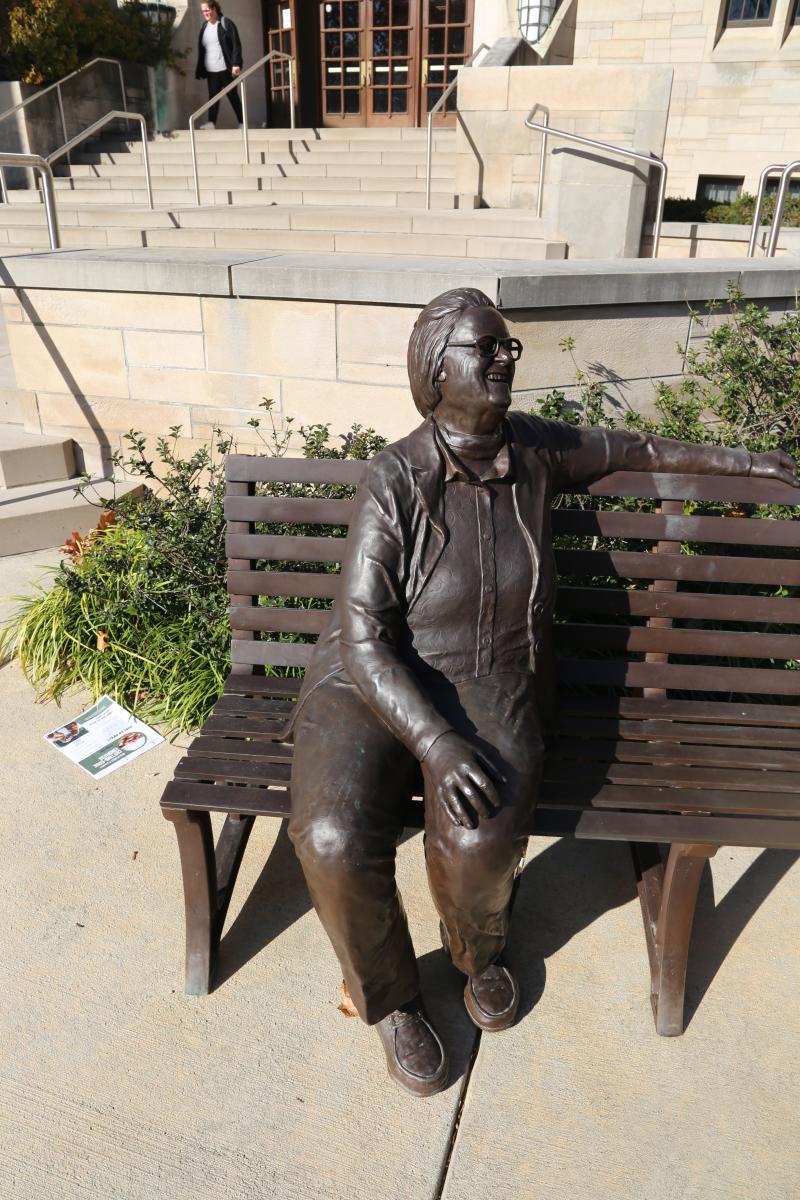
1100 E. 7th Street, behind Woodburn Hall, now known as Ostrom Commons (2020)
Elinor Ostrom's career was filled with a number of firsts - most notably the first woman to win the Nobel Prize in Economic Sciences. Her statue also marks the first sculpture of a woman on campus. Ostrom was the Arthur F. Bentley Professor of Political Science in the College of Arts and Sciences and a professor in the School of Public and Environmental Affairs. Her work challenged common economic assumptions by disproving the "tragedy of the commons," which states that humans will overuse any asset that is available freely. Her work suggested that government regulation was not necessarily needed to protect public resources. She showed that small communities around the world were capable of developing collective, self-governing institutions that would prevent over-exploitation of communal resources.
George Taliaferro

701 E. 17th St. Memorial Stadium outside of the North End Zone facility (2019)
George Taliaferro was one of the most important and influential individuals in the history of Indiana University and IU Athletics. Taliaferro was a three-time All-American at IU who led the Hoosiers' unbeaten 1945 Big Ten Championship team in rushing. He later became the first American-American drafted by an NFL team when the Chicago Bears selected him in the 13th round. Taliaferro was integral in the desegregation of Indiana University.
Spirit of Indiana
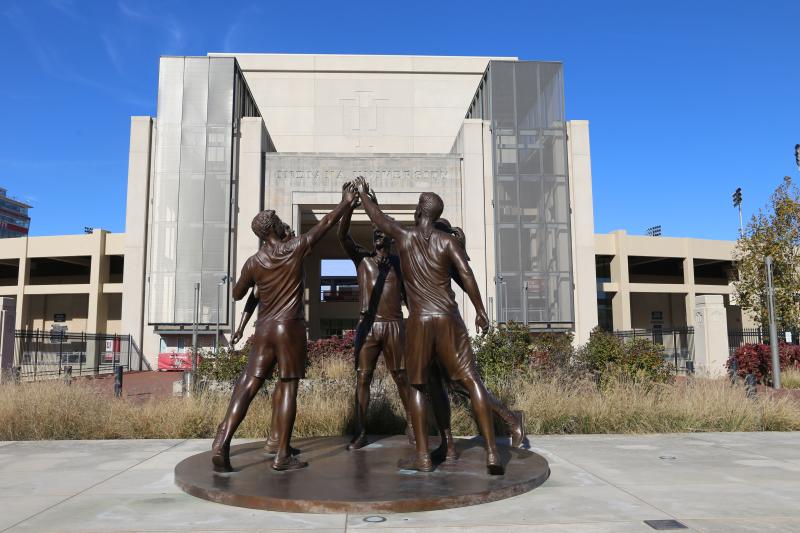
Miller Plaza south end of Memorial Stadium 701 E. 17th St. (2021)
"Spirit of Indiana," sits atop a circular base and features five young student-athletes coming together in a huddle before taking the field of competition signifying the concept of team over self. "The Spirit of Indiana" was first introduced as IU's theme in 1925 before evolving into "The Spirit of Indiana: 24 Sports, One Team" in 2010.
Ernie Pyle

601 E. Kirkwood - outside of Franklin Hall in the Old Crescent area (2014)
A former student and Pulitzer-prize winning reporter Ernie Pyle was one of the first embedded journalists of his time. This statue depicts Pyle sitting on top of a wooden munitions crate dressed in his combat fatigues, as he contemplates how to communicate the life of the common World War II soldier to the world. He spent most of his time alongside troops, getting a first-hand experience of lives at war. His writings became so popular that his columns were published in over 400 daily newspapers worldwide during the height of the war.
Dr. Alfred C. Kinsey

150 S. Woodlawn Ave. - east of Lindley Hall (2022)
A biologist and zoologist by training, Kinsey spent most of his career conducting transformative studies and research on human sexuality. He joined the IU faculty in 1920, becoming a recognized authority on the taxonomy of gall wasps. His findings of human sexuality provoked an international conversation. He later founded The Kinsey Institute in 1947 and is the world's leading sexuality research institute. Kinsey and his co-workers published "Sexual Behavior in the Human Male" in 1948 and "Sexual Behavior in the Human Female" in 1953.
Hoagy Carmichael
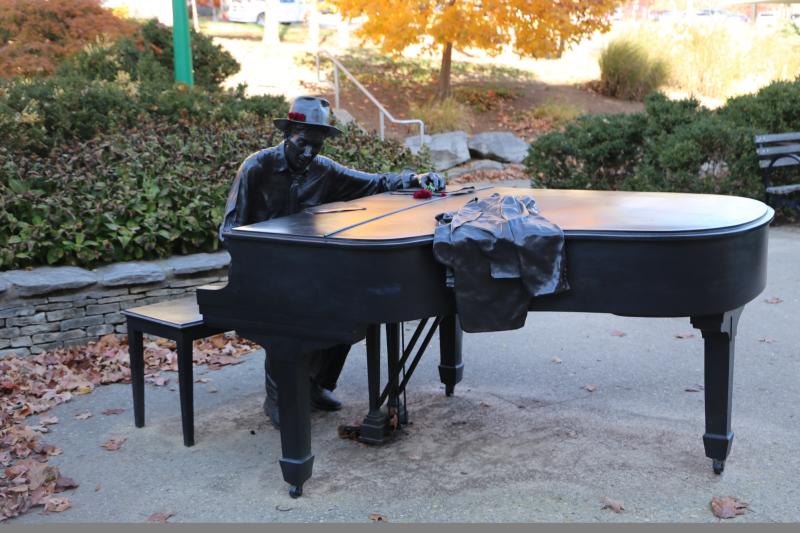
1213 E. 7th St., northeast side of the IU Auditorium, along Eagleson Ave. (2008)
Howard "Hoagy" Carmichael was born in Bloomington in 1899 and earned both his bachelor's degree (1925) and his law degree (1926) from Indiana University. As a student, he began to compose songs and perform regularly with Carmichael's Collegians, his first band. After law school, he worked briefly as a law clerk before pursuing a music career, writing many of the song that have become American jazz standards, including "Georgia on My Mind," and "Stardust." Carmichael won the 1952 Oscar for the song "In the Cool, Cool of the Evening." After his death in 1981, his family donated his archives and many personal belongings to IU, and is buried in Rose Hill Cemetery in Bloomington.
